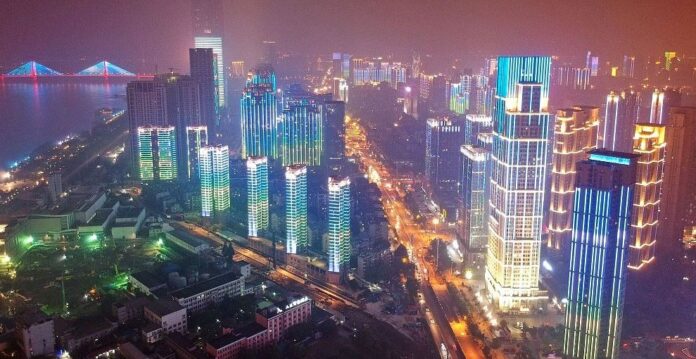As the fifth anniversary of Wuhan’s Covid-19 lockdown approaches, the city has largely moved on from the pandemic’s darkest days. Once marked by empty streets and overwhelmed hospitals, Wuhan now bustles with activity—its shopping districts full and its streets once again congested with traffic. Yet, the shadow of the pandemic still lingers beneath the surface.
A City Rebuilding
On January 23, 2020, Wuhan sealed itself off for 76 days, marking the beginning of China’s zero-Covid policy and setting the stage for global disruption. At that time, the city’s hospitals were overrun with patients, and fear gripped its residents. Fast forward to today, and the memories of those trying days are fading for many locals.
“People are moving forward, these memories are getting fuzzier and fuzzier,” said Jack He, a 20-year-old university student from Wuhan. He was a high school sophomore when the lockdown began, spending much of his year in isolation. Now, he says, “a new life has started.”
Official Silence and the Erasure of the Past
The Huanan Seafood Wholesale Market, believed by scientists to be the source of the virus, now stands behind a light blue wall, hiding its significance. The market’s closure is not marked by any memorials or public acknowledgment, and there are no major tributes to those lost to Covid in the city.
In place of public remembrance, official commemorations have focused on the “heroism” of Wuhan’s medical workers and the city’s swift response to the outbreak. However, the lack of recognition for the pandemic’s early missteps, including censorship of the virus’s spread, remains a sensitive topic.
A Changing Reputation
Wuhan’s image as the epicenter of the pandemic has not been easily shaken. At the newly relocated New Huanan Seafood Market, vendors were hesitant to discuss the past, with some refusing to speak to journalists. The market’s management even monitored interactions with reporters, sending security footage to stall owners and warning them against engaging.
Despite this, Wuhan’s reputation as the birthplace of the pandemic has not stopped the city from thriving. In fact, many locals like Chen Ziyi, a 40-year-old resident, believe the pandemic’s aftermath has led to greater attention and tourism. “Now everyone pays more attention to Wuhan,” she said. “They say Wuhan is the city of heroes.”
A City of Contrasts
While one of the few public tributes to the pandemic is an “anti-Covid-19 pandemic educational base” at a petrol station near the abandoned Huoshenshan hospital, much of the city has embraced normalcy. On Shanhaiguan Road, locals enjoy breakfast markets, while upscale areas like Chuhe Hanjie see residents strolling in designer outfits, shopping, and sipping bubble tea.
As the fifth anniversary of Wuhan’s lockdown draws near, the city has transformed into a bustling hub of commerce and culture, its pandemic past a distant memory for many—but not for all. The stark contrast between the Wuhan of January 2020 and the Wuhan of 2024 speaks to the resilience of a city that has moved forward, even as traces of the pandemic slowly fade into history.
Key Points:
- Wuhan’s Transformation: Five years after the city’s Covid-19 lockdown, Wuhan has rebounded, with bustling streets, shopping districts, and traffic, a stark contrast to the empty streets and overwhelmed hospitals during the initial lockdown.
- Fading Memories: Locals, like 20-year-old Jack He, reflect on the pandemic’s impact, but many feel the memories are becoming less vivid as life returns to normal.
- Erasure of the Past: Significant sites like the Huanan Seafood Wholesale Market, where the virus may have originated, are shielded from view with no major memorials or tributes to the lives lost during the pandemic.
- Official Commemorations: Public acknowledgments of Wuhan’s ordeal emphasize the heroism of medical workers and the city’s swift response, but omit recognition of early government censorship of Covid cases.
- Ongoing Sensitivity: Vendors at the New Huanan Seafood Market are reluctant to discuss the past, and security footage was used to monitor journalists, highlighting the sensitivity around Wuhan’s pandemic reputation.
- Increased Tourism and Pride: Many locals, like Chen Ziyi, believe Wuhan’s increased global attention post-pandemic has been beneficial, with some referring to it as the “city of heroes.”
- City of Contrasts: While a few pandemic memorials exist, much of Wuhan now thrives with vibrant markets and upscale shopping areas, signaling a city that has largely moved on from its pandemic origins.



